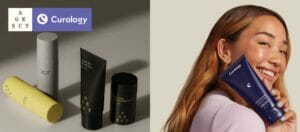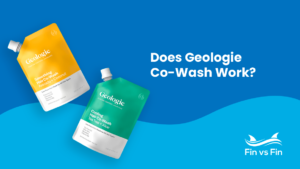Clammy hands can be more than just an embarrassing symptom when nervous or hot. For many, it’s a symptom of a much more problematic hereditary condition called Hyperhidrosis, which affects nearly 5% of the global population.
Hyperhidrosis doesn’t just affect the hands though. Most people who live with Hyperhidrosis also suffer from extreme sweating on the feet, face, underarms, back, breasts, groin, and thighs. So much sweat can make daily life embarrassing, so treating symptoms— even if not life-threatening— can create immense relief from anxiety, or even depression.
In this article, we will be discussing Hyperhidrosis and comparing Lume vs Carpe vs Drysol, three well-known antiperspirants that specifically address the needs of patients with an excessive sweating disorder. If you are already familiar with Hyperhidrosis, click here to jump to the antiperspirant comparisons.
What is Hyperhidrosis, and why does it cause excessive sweating?
Hyperhidrosis is a condition that causes uncontrollable, excessive sweating throughout the body, although it tends to be the most extreme in the hands, feet, or underarms. Unlike normal sweating, this sweat is not a result of your body’s thermoregulation, but rather from a genetic condition of hyperactive sweat glands.
Excessive sweating causes many people who have this condition to stress out further and suffer from anxiety. Simple acts like shaking someone’s hand, or finding sweat marks left behind on your chair when standing up can be panic-inducing.
And this added stress often triggers even more sweating, entering a never-ending spiral of perspiration and anxiety. Sounds awful, right? It’s no wonder that depression is more than twice as common among Hyperhidrosis sufferers.
Though seemingly benign, when those with Hyperhidrosis suffer with the embarrassment everyday, just going through the daily motions of life can cause constant shame. Most of those with Hyperhidrosis report avoiding touch with other people, including their significant others.
Another shocking statistic is that 70% of Hyperhidrosis patients have changed their careers due to their condition, either out of embarrassment, or because their excessive sweat jeopardized their safety or physical comfort.
How can you tell if you have Hyperhidrosis?

Everyone sweats, and many people claim to sweat profusely. But how do you know if you actually suffer from hyperhidrosis or simply have active and healthy sweat glands? Below are common signs you have a chronic condition:
- You sweat noticeably when others don’t: Even in cooler temperatures and without vigorous exercise, sweat beads up on your skin and soak your clothing. It may be impossible to wear makeup, as face sweating may cause smears, smudges, or beads on your skin.
- Your sweat follows you: Objects and fabrics that you come in contact with become wet, leaving behind sweaty door knobs, stinky shoes and clothing, wet chairs or sofas.
- Your excess sweat impairs daily activities: Whether your career requires you to constantly meet new people and shake hands, or your sweat creates dangerous challenges for you to perform your job, or your constant wet skin makes intimacy with your partner embarrassing and impossible, your daily life may be greatly impacted by your excess sweat.
- You are subject to skin irritations and/or infections: Constant moisture can cause skin to turn white and peel, causing irritation. Alternatively, excessive sweating causes many to suffer from various kinds of yeast infections, such as athlete’s foot. In fact, the risk of skin infections is 3x higher amongst Hyperhidrosis sufferers (!)
- Others in your family have it too: Hyperhidrosis is a hereditary condition, and most who have it have a family member who also suffers from it.
There are two forms of Hyperhidrosis
Primary Focal Hyperhidrosis
Primary Focal Hyperhidrosis is the most common of Hyperhidrosis cases. It typically comes on during adolescence and is believed to be the result of an overactive sympathetic nervous system, which in turn causes overactive sweat glands.
Hands, feet, underarms, face and head are the most affected areas of the body for excessive sweat. Although embarrassing, Primary Focal Hyperhidrosis is not a serious health concern, and not indicative of other health issues.
Secondary Generalized Hyperhydrosis
Also known as Diaphoresis, this form of Hyperhidrosis arrives during adulthood, usually after 25 years old. Diaphoresis is often a symptom of other medical conditions, or medications, and it is recommended that you visit a doctor to discuss your symptoms as there may be a more serious underlying cause.
Night sweats are much more common with Secondary Generalized Hyperhidrosis, and the sweating occurs much more generalized over the entire body, not limited to certain areas.
What are the most common treatments for hyperhidrosis?
- Antiperspirants: These are the first line of defense for Hyperhidrosis sufferers. Most antiperspirants contain metallic salts, with some using aluminum chloride as an active ingredient. (Side effects include minor skin irritation.) Over-the-counter underarm antiperspirants contain between 2.5%-15% of aluminum salt concentrations, while prescription-strength hand and foot antiperspirants usually contain about 30% aluminum chloride hexahydrate concentrations. Most antiperspirants are not for use in children under 13 years of age. Click here to jump to compare antiperspirants.
- Iontophoresis: This is used for those who have tried antiperspirants, but need something stronger. Iontophoresis treatments are applied to the hands and feet to dramatically decrease sweating by 81-91%. A medical device is used to pass mild electrical current through water and through the skin’s surface. Pretty ingenious, actually.
- Botox Injections: Botox is used for severe cases of Axillary Hyperhidrosis, meaning excessive sweating in the underarms specifically. Botox injections will block or interrupt the body’s secretion of a chemical “messenger” that is responsible for turning on the body’s sweat glands. Other small areas of the body that suffer from excessive sweat, like the face, hands, feet, or the area under the breasts can also benefit greatly from Botox injections.
- Microwave Thermolysis: miraDry is a non-invasive handheld device that delivers precise, controlled electromagnetic energy beneath underarm skin to the specific areas where sweat glands are located, resulting in thermolysis, which is the decomposition by heat, of the sweat glands. miraDry is for use in the underarm region only, and has not yet been cleared for other areas of the body.
- Topical Anticholinergics: The active ingredient in the topical treatment Qbrexza is glycopyrronium tosylate, an anticholinergic formula. Qbrexza applies this formula with individually packaged clothes, or wipes, to be used at home once per day to reduce underarm sweating. It has been cleared by the FDA to be used on children as young as nine years old.
- Oral Medications: There are several kinds of oral medications for Hyperhydrosis, including oral anticholinergics, beta blockers, and benzodiazepines. Oral anticholinergics can include glycopyrrolate, oxybutynin, benztropine, and propantheline, but these medications have not been studied for their use with Hyperhidrosis patients, but for other medical conditions. Likewise, beta blockers like propranolol, and benzodiazepines work on the central nervous system for short term use, by blocking the physical manifestations of anxiety, such as sweating.
- ETS Surgery: Endoscopic Thoracic Sympathectomy (ETS) Surgery is the most invasive treatment for Hyperhydrosis. ETS Surgery attempts to interrupt the transmission of nerve signals from the spinal column to the sweat glands, preventing these nerve signals from turning on the sweat glands.
For more information, The International Hyperhidrosis Society has a resourceful podcast called Know Sweat that addresses all things Hyperhidrosis.
Do antiperspirants actually work for excessive sweaters?
As mentioned above, antiperspirants are the first line of defense for Hyperhidrosis sufferers. They are the most popular because they are the least invasive and the most cost effective.
Studies have shown that aluminum chloride compounds do create effective results for those suffering from Hyperhidrosis, though skin irritation is a common side effect.
Depending on the excessiveness of sweat, Hyperhidrosis sufferers can use regular antiperspirants from the market, clinical strength over-the-counter products, or prescription products. It is recommended to try the least strong formulas first and work your way up to minimize risk of irritation.
That said, I’ve met a ton of people with Hyperhidrosis who say over-the-counter antiperspirants don’t cut it for them — either due to skin irritation from constant use, or because they simply need something stronger.
How do you apply antiperspirant properly?
The International Hyperhidrosis Society recommends the following:
- applying antiperspirants at night before bed, and if needed, once in the morning, always to completely dry skin
- gently massaging antiperspirant into the skin
- aerosol antiperspirant products or wipes may be best for managing sweaty feet, but otherwise, a soft solid antiperspirant is best for other areas of the body
Lume vs Carpe vs Drysol: Comparing Antiperspirants For Hyperhidrosis
Lume vs Carpe vs Drysol: Best Antiperspirant for Hyperhidrosis Compared | |||
|---|---|---|---|
| Prescription Required | ✖️ | ✖️ | Yes, in the United States. No, in Canada. |
| Covered by Health Insurance | ✖️ | ✖️ | Maybe - Case by case basis with some insurance providers. |
| Product Range | Products target underarms and private parts but can be used on full body. | Specific products for hands, feet, underarms, face, breasts, thighs, groin. | Recommended for underarms, but has been used on the full body. |
| Available Forms | Available in solid stick, lotion, and soap. | Available in creams, wipes, solid sticks, and powder. | Available in lotion or dab-on stick. |
| Trial Offer/ Discount | Orders over $20 ship free. On first purchase, 1 opened product is available for a refund within 30 days. | 100% money-back guarantee within 60 days of purchase. Ships free. | None |
| Bundle Discounts | 10%-19% off with bundle orders | 13%-33% off with bundle orders | None |
| Subscription Discounts | 10% off with subscription | 10% off with subscription | None |
| Ingredients / Formula | Lume is vegan and cruelty free. Lume products contain none of the following: Aluminum, Silicone, Phthalates, Sulfates, Parabens, Gluten, Corn, Soy, Talc, Baking Soda. | Carpe active ingredients: 15% aluminum sesquichlorohydrate, isopropyl alcohol. | 32% Aluminum Chloride Hexahydrate-based formula, anhydrous ethyl alcohol (Mild formulas contain 6.25% ACH). |
| Side Effects | None Reported | No side effects expected, but the active ingredients can cause drying, irritation, itching, flaking, respiratory toxicity, asthma. | The active ingredients can cause drying, irritation, itching, flaking, respiratory toxicity, asthma. |
| Safe for Children | ✔️ | ✔️ | Not recommended for children under the age of 13. Check with your Dermatologist to see if it is safe for your child. |
| Website |
Lume: The All Natural Odor Eliminator
Lume is an all natural, vegan, aluminum and baking soda-free antiperspirant that is probably the safest for the widest range of people. Lume may be the best option for people with sensitive skin and allergies.
Lume’s antiperspirants come in lotions, solid sticks, and soaps, and bundles or subscription options are available. Their products specifically target sweating in the underarms and private parts — though can be used anywhere — and come in a range of pleasant scents, like Lavender Sage, Jasmine Rose, Juniper Berry, Silver Spruce, and Unscented.
We also appreciated Lume’s robust and resourceful blog, with how-to guides, and hilarious, videos that entertain as well as educate. Lume’s brand tends to focus more on odor elimination rather than on excessive sweating, but they do address sweating and odor in places beyond the armpits. In fact, Lume focuses a lot on both women’s and men’s private parts, tackling the stigma and misdiagnosis of groin sweat and body odor.
According to Lume’s website and other sellers, their products work well for most people and their customers seem satisfied. However, Lume stresses the importance of priming your body and pre-treating clothing before using Lume for best results. This includes using an enzyme detergent to pre-treat the armpits of your clothing, eliminating smelly bacteria from the fabrics. Lume says that it takes approximately 72 hours of use before customers notice the difference.
Carpe: The Full-Body Over-The-Counter Bundle
Carpe is an over-the-counter aluminum and alcohol-based antiperspirant that is specially formulated for Hyperhidrosis sufferers. They are official supporters of the International Hyperhidrosis Society, and have been featured in dozens of glossy print and online magazines.
Carpe’s antiperspirants come in lotions, solid sticks, and disposable wipes, with a wide range of bundles and subscription options available. Their products each target specific areas of the body like the face, underarms, hands, feet, groin, thighs, and breasts, and feature a mild eucalyptus scent.
Like Lume, Carpe also has a robust and resourceful blog called Sweatopedia, with how-tos, and tons of supportive information and topics for Hyperhidrosis sufferers.
Carpe’s own commissioned study found that users can expect at least a 20% reduction in sweating by the 3rd application. Another larger study of Carpe’s active ingredient showed a 61% reduction in sweat after four weeks.
Carpe says to apply their antiperspirants to dry skin every night before bed, and once again in the morning. It takes about 4 weeks for maximum efficacy to take full effect.
Drysol: The Prescription-Strength Solution
Drysol is an aluminum and alcohol-based antiperspirant formulated specially formulated for Hyperhidrosis sufferers. In the United States it is available by prescription, and over-the-counter in Canada.
Drysol only comes in lotion or dab-on sticks, and at this time there are unfortunately no bundles or subscription options available. Drysol targets hands, feet and underarms, but can be used anywhere on the body.
Drysol is considerably less expensive than Lume or Carpe, and is sometimes covered by health insurance. But the side effects listed sound somewhat alarming:
Even though the International Hyperhidrosis Society recommends never wrapping skin with antiperspirant applied, Drysol’s Directions of Use require skin to be wrapped overnight, possibly to avoid transferring the antiperspirant to clothing or bed sheets. As such, skin sensitivity has been reported among many users, and one study of the active ingredient (ACH) revealed that 26% of patients found continued treatment intolerable.
Get exclusive discounts

on popular health & wellness brands!
The Verdict: Which antiperspirant is best for you -- Lume, Carpe, or Drysol?
Lume, Carpe, and Drysol are three very different antiperspirants, each with sweat-stopping solutions that work well for different consumers. Since dermatologists recommend experimenting with products that are likely to cause the least irritation, Lume stands out as the best in our book at providing sweat and odor-free living without painful skin problems. Its all-natural formula leaves out many toxins that typically cause skin irritation, making it our go-to pick for people with sensitive skin or simply a philosophical aversion to applying unnecessary chemicals to their body.
While Lume is great, Carpe’s wide range of products targeting specific areas of the body might be a better fit if you sweat acutely in only one area. Carpe’s foot formula is no doubt much stronger than its face or groin formulas, and so experimentation may be required to find the best product to match your perspiration patterns. Overall though, they are a legit brand that’s been around and is trusted by many.
Drysol is the strongest antiperspirant of the three, and despite many online reviews claiming skin irritation with use, doctors recommend and prescribe Drysol more than any other antiperspirant for severe Hyperhidrosis cases. It may be best to try the other two antiperspirants first since Drysol requires a prescription from your doctor.
An honorable mention that we didn’t compare here, but is 100% worth checking out is Roman. For those looking for prescription hyperhydrosis meds without visiting their primary care physician, Roman offers a Drysol (20% aluminum chloride hexahydrate) cream for hyperhidrosis for just $13/month. Best of all, they can prescribe it online / virtually.
Regardless, stay positive!
It’s always best to discuss your options with a Dermatologist before starting any new skin routine, and the International Hyperhidrosis Society has more information and recommendations for you to research and discuss with your doctor.
Remember that Hyperhidrosis is a very common condition, affecting approximately 365 million people worldwide, so if you feel that you sweat too much, know that you are not alone. Best of all, new antiperspirants like Lume, Carpe, and Drysol mean sweaty palms, feet, and pits don’t need to disrupt your life any longer!
Give these clammy-hand antiperspirants a whirls and let us know which worked best for you. We’d love to hear about your experience treating Hyperhidrosis in general (and so would others!) if you have any insights to share in the comments below.
Discover more skincare reviews

Pique Radiant Skin Duo Review – Can a Drink Really Make Your Skin Glow? We Asked a Dermatologist.
Pique Radiant Skin Duo Overview Price: $126 for one-time purchase of 28 servings Possible benefits: Radiant skin, immune and digestion support, as well as calm energy Flavors: Yuzu

Agency vs Curology – Which is the Best for Telederm?
We all know that taking care of your skin is a worthwhile investment. While aging is inevitable, the right skincare routine could keep your skin

Geologie Co-Wash Review: Should You Try It? We Found Out
Most people use shampoo for their entire lives without ever questioning if it’s good for their hair or scalp. I know I’ve spent most of

Musely vs Curology vs Apostrophe: Which Is Best For Prescription Skincare Online?
With so many prescription skincare platforms to choose from these days, and it can be difficult to decide which is best for you. In

Geologie Eye Cream Review – Does it Work on Puffy Dark Eye Circles?
Do you have dark circles and bags under your eyes and generally feel like you’re aging faster than you should? If so, you need to

How to Get Spironolactone Online for Acne & Hair Loss
Spironolactone – sometimes called “spiro” for short – has been a miracle drug for many suffering from acne, PCOS, and hair loss. Typically taken orally


















